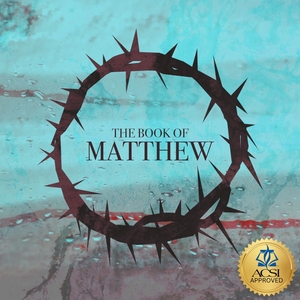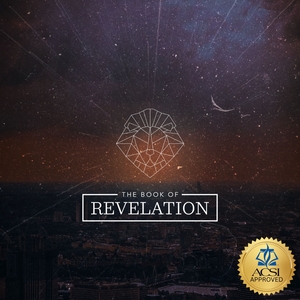Can you reconcile the events described in Daniel 9:25-27 (i.e., the Seventy Weeks or 490 years) with the historical timeline?
Frankly, no one can adequately reconcile the biblical dates given in Daniel 9 with the classic historical timeline for the same period, but there is another solution.
Reviewing the prophecy of Daniel 9, we’re told that 69 “sevens” (i.e., 483 years) must elapse between two key events in Jewish history.
Dan. 9:25 “So you are to know and discern that from the issuing of a decree to restore and rebuild Jerusalem until Messiah the Prince there will be seven weeks and sixty-two weeks; it will be built again, with plaza and moat, even in times of distress.
Dan. 9:26 “Then after the sixty-two weeks the Messiah will be cut off and have nothing, and the people of the prince who is to come will destroy the city and the sanctuary. And its end will come with a flood; even to the end there will be war; desolations are determined.
The angel Gabriel tells Daniel that the seventy weeks (i.e., 490 years) begins with an issuing of a decree to rebuild the city of Jerusalem, which was destroyed after Babylon conquered Judah.
Then, we're told that 49 years (i.e. seven sevens or 7 x 7) must pass after the decree is issued before construction on the city and walls will be finished, which happens under Nehemiah’s leadership. The decree that meets this description was issued by Cyrus the Great as described in 2Chronicles 36:
2Chr. 36:22 Now in the first year of Cyrus king of Persia — in order to fulfill the word of the LORD by the mouth of Jeremiah — the LORD stirred up the spirit of Cyrus king of Persia, so that he sent a proclamation throughout his kingdom, and also put it in writing, saying,
2Chr. 36:23 “Thus says Cyrus king of Persia, ‘The LORD, the God of heaven, has given me all the kingdoms of the earth, and He has appointed me to build Him a house in Jerusalem, which is in Judah. Whoever there is among you of all His people, may the LORD his God be with him, and let him go up!’”
Notice this decree was the one to "fulfill the word of the Lord." Also, it is specifically issued by Cyrus, who Isaiah named as the one who would issue the required decree (see Isaiah 44:28). Clearly, Cyrus' decree must be the one described in Daniel 9:25.
This decree was issued in the "first year" of Cyrus the Great. Therefore, the year Cyrus the Great assumed the throne of Persia must be our starting point for counting the 69 weeks or 483 years.
Secondly, Daniel 9:26 says that the end point of the 69 weeks (i.e., 483 years) is the moment the Messiah is cut off and has "nothing." Any fair reading of those words must conclude this to be a reference to Messiah’s death on the cross. The Hebrew word translated “cut off” means to kill or to make a covenant (since the forming of a covenant required the shedding of blood). Therefore, the end of the 483 years is the year Jesus dies on the cross.
Based on the biblical record, we can determine that Jesus was born between 6-5 BC and died in AD 27. If we count backward from AD 27 by 483 years, we arrive at 456 BC as the year Cyrus the Great ascended the throne and issued his decree.
Problem solved?
Unfortunately, no, because our modern calendar claims the reign of Cyrus the Great began in 538 BC, which adds 82 years to our timeline. According to Ptolemy’s Canon (the basis for our calendar of ancient kings and empires), 566 years passed between Cyrus’ decree and Jesus’ death, not 483 years.
Over the centuries, biblical scholars have sought to resolve this difference by “moving the goal posts" (i.e., proposing new starting and ending points for the events in Daniel’s prophecy). By assigning new meaning to the angel’s words in Daniel 9, they've arrived at various “solutions" that reduce or even eliminate the 82-year discrepancy.
For example, some assert that the decree mentioned in Daniel 9:25 was issued by one of Cyrus’ successors rather than by Cyrus the Great. Others assume different years for Christ’s birth and death. Still others interpret the term “cut off” from Daniel 9:26 to mean something other than Christ’s death.
In adjusting these assumptions, scholars creatively seek for a reconciliation, yet most scholars seem unwilling to consider another possible explanation...what if Ptolemy’s canon is wrong?
Though it is not a popular theory, some scholars propose that it’s not the Bible’s chronology that’s wrong, but the historical timeline based on Ptolemy’s canon that is in error. In other words, Cyrus the Great did ascend to his throne in 456 BC as 2Chronicles 36, Ezra and Daniel report and not in 538 BC as the Ptolemaic chronology claims.
In reviewing the origins of our modern calendar, some scholars find good reason to hold the Ptolemaic chronology in doubt. To quote Dr. David Cooper:
Ptolemy (A.D. 70-161) was a great constructive genius. He was the author of the Ptolemaic System of Astronomy. He was one of the founders of the Science of Geography. But in Chronology he was only a late compiler and contriver, not an original witness, and not a contemporary historian, for he lived in the 2nd Century after Christ. He is the only authority for the Chronology of this period. He is not corroborated. He is contradicted, both by the Persian National Traditions preserved in Firdusi, by the Jewish National Traditions preserved in the Sedar Olam, and by the writings of Josephus.
While Ptolemy's dating of events following Alexander the Great is generally considered to be accurate, his proposed dates for earlier events are suspect at best. Dr. Cooper documents Ptolemy's errors in detail. Nevertheless, Ptolemy’s Canon remains the basis for our modern calendar.
If we allow for the possibility that Ptolemy’s dates for events prior to the Greek Empire may be wrong, then we are free to propose the Bible’s chronology as an alternative. In that case, no reconciliation would be required. We simply count history in biblical terms and explain that our modern calendar differs from the biblical account due to errors in Ptolemy’s assumptions.
Though such a solution may not be satisfying, it is not unprecedented. For example, many Christians attempt to reconcile the Creation account with the modern theory of Evolution, when no such reconciliation is possible. The two explanations of origins are mutually exclusive points of view. Therefore, if we believe the testimony of Scripture, we must reject the world’s teaching on origins out of hand and accept the biblical account of Creation instead (though there is great scientific support for the Creation account as well.)
Likewise, we should accept the Bible’s timeline in Daniel to be the accurate record of history, while dismissing the Ptolemaic chronology as containing human error.
Scripture quotations taken from the (NASB®) New American Standard Bible®, Copyright © 1995, 2020 by The Lockman Foundation. Used by permission. All rights reserved. www.lockman.org







